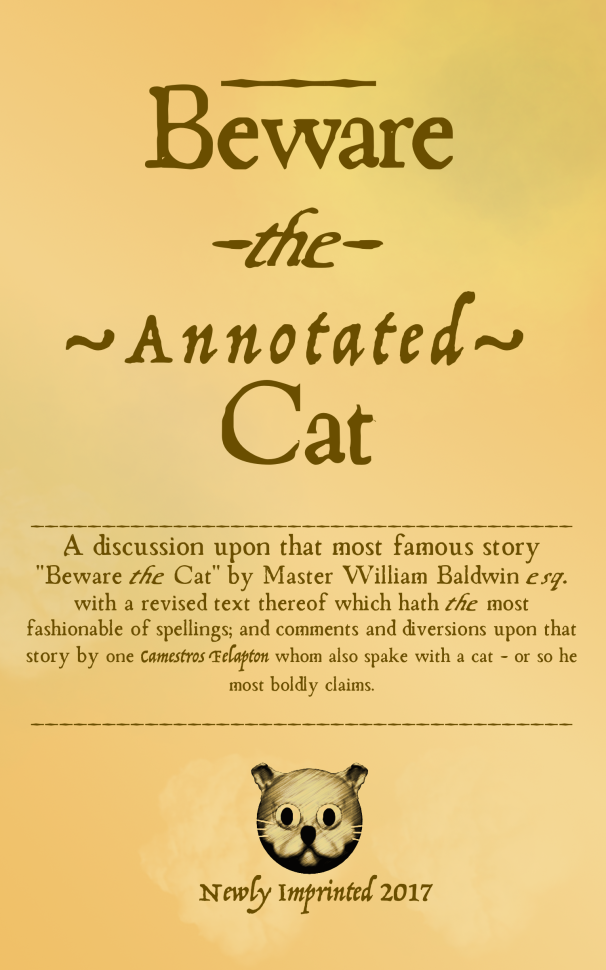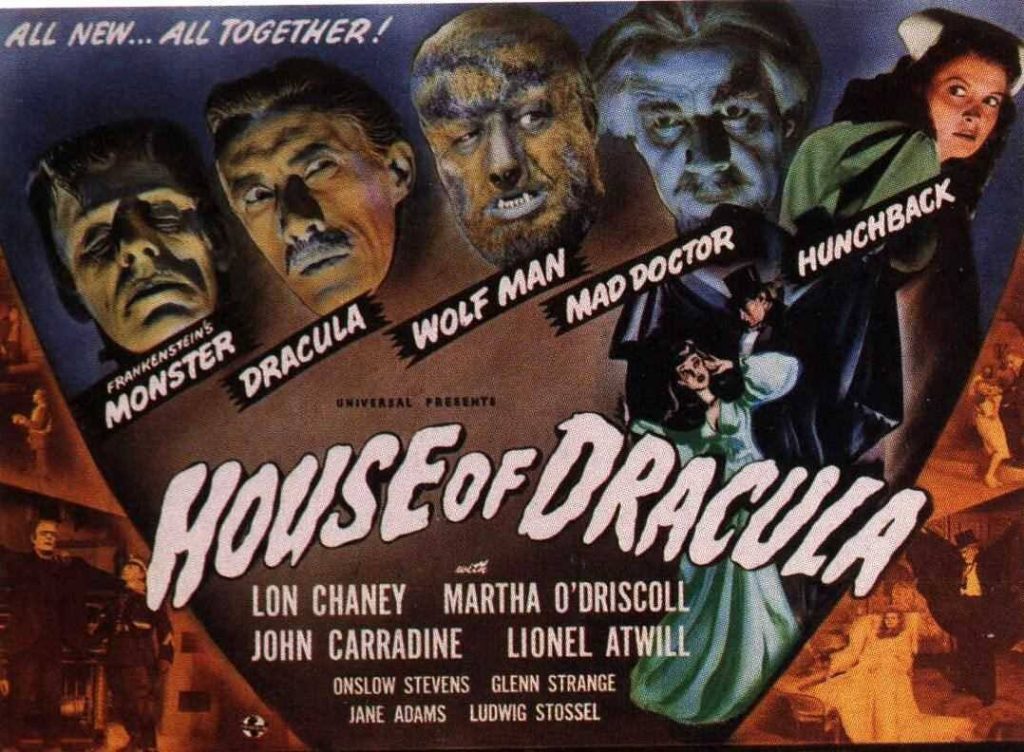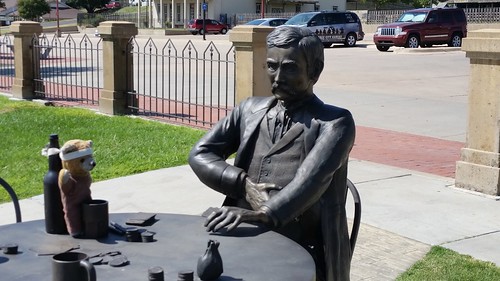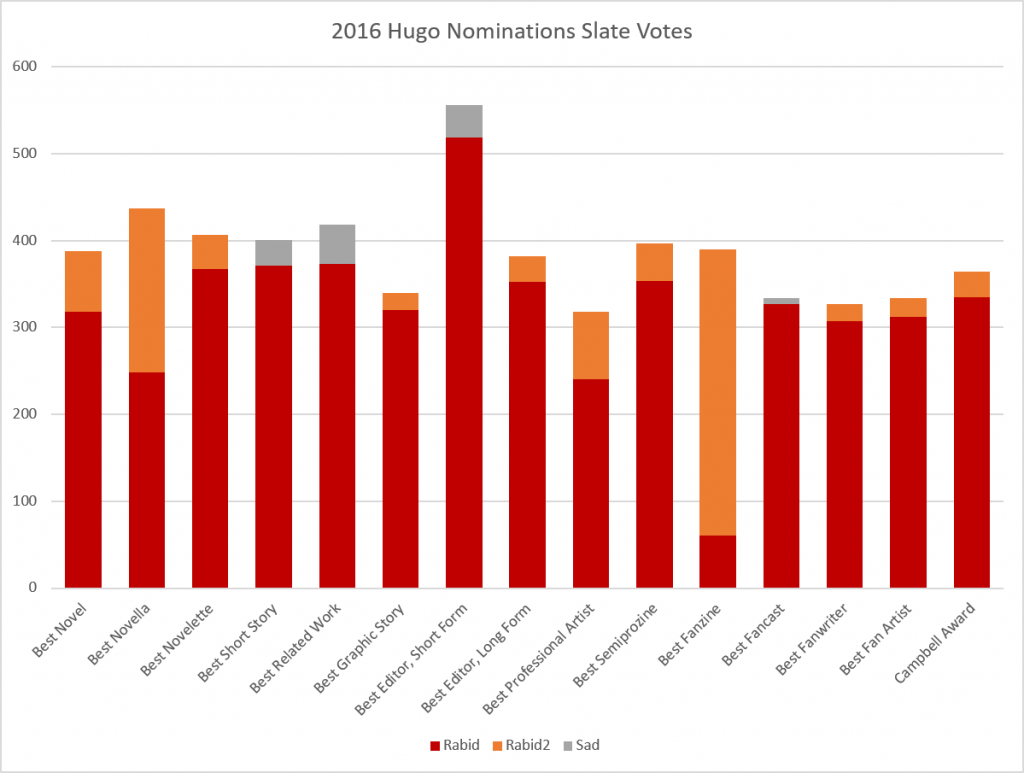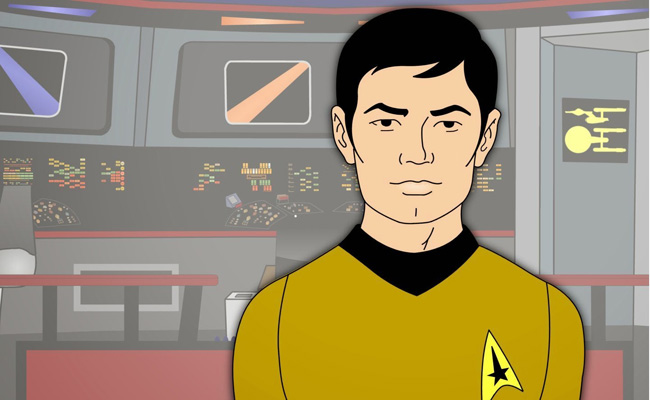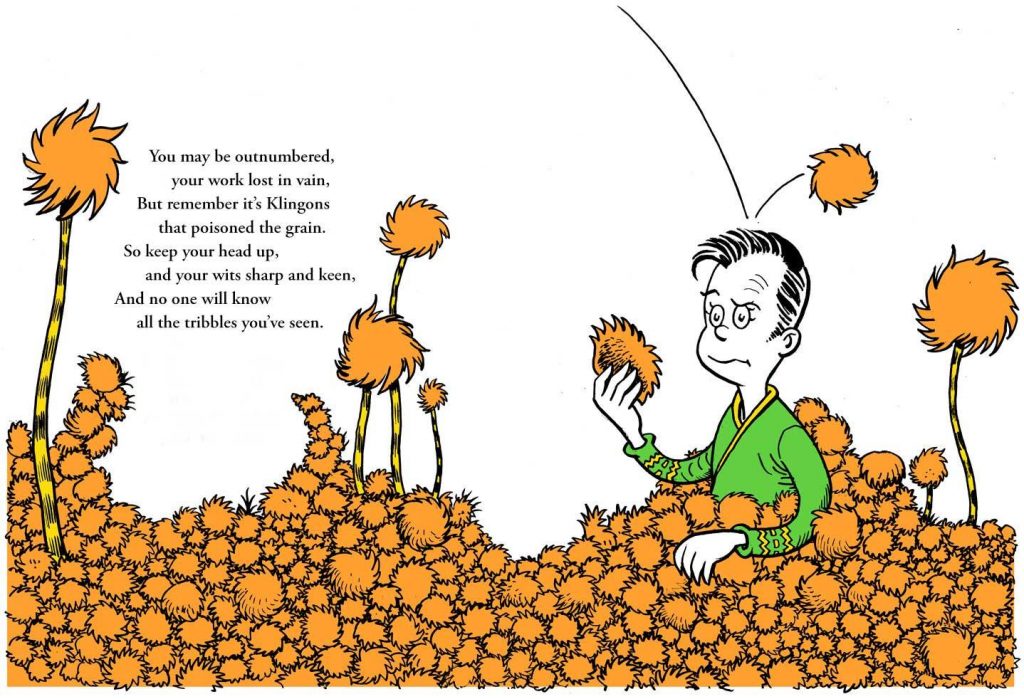(1) DEDICATED TO MEREDITH. It’s ”Appreciate a Dragon Day”. According to the Donita K. Paul website:
Appreciate a Dragon Day was started in 2004 by Mrs. Paul to celebrate the release of DragonSpell. We encourage you to join us as we celebrate literacy and have some fun!
(2) NEANDERTHALS. Jon Mooallem delivers a thoroughly fascinating account of paleoanthropological research in “Neanderthals Were People, Too” at the New York Times.
For millenniums, some scientists believe, before modern humans poured in from Africa, the climate in Europe was exceptionally unstable. The landscape kept flipping between temperate forest and cold, treeless steppe. The fauna that Neanderthals subsisted on kept migrating away, faster than they could. Though Neanderthals survived this turbulence, they were never able to build up their numbers. (Across all of Eurasia, at any point in history, says John Hawks, an anthropologist at the University of Wisconsin-Madison, “there probably weren’t enough of them to fill an N.F.L. stadium.”) With the demographics so skewed, Stringer went on, even the slightest modern human advantage would be amplified tremendously: a single innovation, something like sewing needles, might protect just enough babies from the elements to lower the infant mortality rate and allow modern humans to conclusively overtake the Neanderthals. And yet Stringer is careful not to conflate innovation with superior intelligence. Innovation, too, can be a function of population size. “We live in an age where information, where good ideas, spread like wildfire, and we build on them,” Stringer told me. “But it wasn’t like that 50,000 years ago.” The more members your species has, the more likely one member will stumble on a useful new technology — and that, once stumbled upon, the innovation will spread; you need sufficient human tinder for those sparks of culture to catch.
I picked that paragraph because it reminds me of Robert Zubrin’s argument about the need for population growth as a prerequisite in developing a starship.
To achieve a 200-times increase over today’s GDP, we will need a population of 54 billion. We will need energy of 2500 terawatts by the year 2200.
Pounding away at the opposite conclusions reached in Paul Ehrlich’s famous book The Population Bomb, Zubrin said, “If humans destroyed more than they made, the earth would be barren already. The real resource is human creativity.” Every mouth comes with a pair of hands and a brain. If we accept Malthusian advice, and act to reduce the world’s population, we will impoverish the future by denying it the contributions the missing people could have made.
(3) THE AI TROPE. Ann Leckie’s “Vericon 2016 GoH Speech” overflows with interesting ideas, just like her fiction.
The very first robot story–the first ever use of the word “robot” in fact–is a robot uprising story. But when Karel ?apek wrote RUR he wasn’t worried about artificial intelligence. The robots of his story aren’t mechanical, they’re made of some sort of synthetic biological material. And the word “robot” which ?apek famously coined, comes from a Czech word for “slave.” It’s a story about the revolt of people made on an assembly line (the first actual assembly line had debuted just ten years earlier). It’s a story about the rebellion of people who were built to be the cheapest, most efficient workers possible, workers you didn’t have to pay, or feed anything in particular, or take any notice or care of. In other words, slaves. And ?apek ‘s story hit a nerve. It didn’t just give us the word for robot, it is the ultimate model for nearly all the robot uprising stories since. So that model–robots as slaves, with all the assumed dangers attendant on enslaving people who outnumber you–is the model we’re using when we think about super smart machines. This has not been lost on any number of science fiction writers, who have used robot and AI stories to comment explicitly on oppression and racism. But just personally–well, I won’t go into my problems with the whole “slaves in my allegory are machines and the masters are human beings” bit, though that’s kind of icky when you think about it, but on top of that I think it’s a dangerous model to use as a basis for actual, serious real world predictions about artificial intelligence.
(4) AUSSIE FANHISTORY. Now available at eFanzines.com, issues of iOTA, a fanzine with news of Leigh Edmonds’ Australian fandom history project.
Here are a pair of excerpts from iOTA #2:
- The purpose of this little efanzine is to serve as a progress report on my current history project which is to research and write a history of Australian fandom, focusing on the period between 1956 and 1975. It is also a place where I can publish little bits and pieces of the writing and art of Australia’s fan past to help introduce you to the rich vein of material that previous generations of fans have left us.
- Fanzine Review what you missed in 1939. Our friend Robin Johnson turns up with the most interesting things at times. Usually it is old airline timetables – and we share an interest it air transport so we can find hours of harmless interest and amusement in airline timetables – but not on this occasion. This time it was a little fanzines with a pink cover produced in the old fashioned way using carbon paper. (If you are not aware of this form of reproduction, I’m thinking about writing a little series called something like ‘Reproductive Pleasures’ in some future issues. Some people have never heard of carbon paper, which means that they are young and happy folk.) This little pink and carbon paper produced fanzine is Ultra 1, produced by Eric Russell in Sydney, bearing the date October 1939. It is probably the fourth fanzine title to be published in Australia after John Devern’s single issue of Science Fiction Review published in February 1939, Australian Fan News, a single issue of which was published by William Veney, Bert Castellari and Eric Russell in May 1939 and three issues of the JSC Bulletin (Junior Science Club) published by Vol Molesworth and Ken Jeffreys in June 1939. (Thanks to Chris Nelson for his extensive research in this area.) Of these early titles Ultra was among the early successful Sydney fanzines, seeing fourteen issues published between October 1939 and December 1941 when the commencement of the Pacific War brought an end to most of this kind of frivolity in Australia.
(5) GERONIMO! Neil Clarke has quit his day job and gone into editing full-time.
I’m quite excited—and a little terrified—by the prospect of taking the leap. There are a bunch of uncertainties, like healthcare costs and filling the income gap between Lisa’s new job and my old one, but we’re close enough to give this career switch a try. As some of you know, this has been a major goal of mine since my heart attack four years ago. At age fifty, and after ten years working part-time, I’m finally going to be a full-time editor!
Naturally, my first priority has to be those uncertainties I mentioned: income gap and insurance. As I see it, I have a few things to target:
- I’ve altered the Clarkesworld Patreon goals to include direct salary and healthcare expenses. Would be nice if it was that simple, but I figure it’s worth putting out there….
(6) HOW TO MAKE IT TO THE FINISH LINE. The New York Times tells “Obama’s Secret to Surviving the White House Years: Books”. Some of these titles are of genre interest.
Even books initially picked up as escape reading like the Hugo Award-winning apocalyptic sci-fi epic “The Three-Body Problem” by the Chinese writer Liu Cixin, he said, could unexpectedly put things in perspective: “The scope of it was immense. So that was fun to read, partly because my day-to-day problems with Congress seem fairly petty — not something to worry about. Aliens are about to invade!”
…To this day, reading has remained an essential part of his daily life. He recently gave his daughter Malia a Kindle filled with books he wanted to share with her (including “One Hundred Years of Solitude,” “The Golden Notebook” and “The Woman Warrior”). And most every night in the White House, he would read for an hour or so late at night — reading that was deep and ecumenical, ranging from contemporary literary fiction (the last novel he read was Colson Whitehead’s “The Underground Railroad”) to classic novels to groundbreaking works of nonfiction like Daniel Kahneman’s “Thinking, Fast and Slow” and Elizabeth Kolbert’s “The Sixth Extinction.”…
(7) CERNAN OBIT. “Gene Cernan, last man to walk on Moon, dies aged 82” reports the BBC.
Captain Cernan was one of only three people to go to the Moon twice and the last man to leave a footprint on the lunar surface in 1972.
The final words he spoke there were: “We leave as we came and, God willing, as we shall return with peace and hope for all mankind.”
He was the commander of the Apollo 17 mission at the time.
Twelve people have walked on the Moon, and only six of them are still alive today
(8) THOUGHT FOR THE DAY
Neil Armstrong, recalling how it felt to look back at Earth from the surface of the moon: “I didn’t feel like a giant. I felt very, very small.”
(9) TODAY’S BIRTHDAY BOY
- Born January 16, 1948 – John Carpenter.
(10) QUOTABLE QUOTE: “In England, I’m a horror movie director. In Germany, I’m a filmmaker. In the US, I’m a bum.” – John Carpenter.
(11) BRANDON EASTON INTERVIEW. From Motherboard, “How Diversity Writing Programs Can Help Sci-Fi Live Up to Its Ideals”.
Motherboard: What do you think is really the problem that people aren’t talking about?
Brandon Easton: A lot of the reason why white writers who are entry level aren’t getting work has nothing to do with diversity programs. It’s because showrunners are hiring their buddies who are also EP’s [executive producers] and co-producer level who have these immense salaries that eat up the budget, so that they can’t hire anybody underneath a story editor level. This is what’s going on. Everyone knows this, yet still you have all these disgruntled writers scapegoating diversity programs instead of talking about the real issue at hand, which is nepotism. If you look at how many people graduate from these programs every year that number is so fucking low, it doesn’t even register as a percentage.
Motherboard: Science fiction has a long history of being open-minded about multiculturalism. Some argue that it’s the most open-minded of the genres. Do you think that’s true?
Brandon Easton: Science fiction as a literary genre, in theory, has open-minded concepts. And the fact is that historically, black writers have not been allowed in because for a while the editors, the people who controlled it, the publishing industry itself, even if someone had a great story – once racial politics were revealed, those people didn’t get to work. Now, if you’re talking about TV and film, there has been some really cool stuff that has progressive undercurrents thematically, but, when it comes to hiring practices we still revert back to straight white men as writers and creators of science fiction. Again, I do believe science fiction in its content itself can be extremely progressive and extremely life affirming, but we’re talking about the content versus the content creators. And I think that’s the issue.
Motherboard: I still think science fiction is special versus the other genres. Not only historically in terms of casting, but because when I read the genre, I don’t care what the race of the writer is. I just want to be blown away. Show me a new way of thinking.
Brandon Easton: I don’t think anyone would disagree with that. What I’m saying is that it helps when people get the opportunity. That’s where the problem is. If you want to be really serious about it, the only genre that’s really helped black people more than anything else has been comedy. Historically, I’m going back to the early 1900s, comedy was the only place where black writers could get a chance to write. Several generations of mainstream black stars came out of comedy: Will Smith, Chris Rock, Dave Chappelle, Jamie Fox, Bill Cosby, Chris Tucker, Eddie Murphy, Steve Harvey, Tyler Perry, Wanda Sykes, Whoopi Goldberg and so many others. Comedy is where African Americans have had a shot, as opposed to science fiction, particularly television, has almost been completely closed to black writers.
(12) PRIZEWORTHY. Jonathan Edelstein’s picks in short fiction – “Another year of awards” at Haibane.
I’ll start with novelettes rather than short stories, because that way I can start with my favorite story of 2016: Polyglossia by Tamara Vardomskaya (GigaNotoSaurus, March 2016). GigaNotoSaurus doesn’t usually get much attention from reviewers and critics, but this is a rich, multi-layered story that is well deserving of an award.
Polyglossia is a story of linguistics, cultural survival, family and resistance to oppression – not necessarily in that order – set in a low-magic fantasy world that suggests the early twentieth century. I’ve mentioned before that I’m a fan of good world-building, and the world of this story is intricately detailed and plausible; more than that, the world-building is integrated into the plot and informs the characters’ actions such that no detail is wasted. The linguistics are also tightly integrated into the plot – the author is a Ph.D. candidate in linguistics with an interest in the philosophy of language, and it shows – and the politics of language and cultural preservation come to play a key part in its resolution. At the same time, the story calls into question what we call family, what duties we owe to our ancestors, and how to balance those duties against the exigencies of politics. Polyglossia is rewarding on several levels – thus far, I’ve never failed to get something new out of it with each rereading – and if I had to pick one story that defined speculative fiction for me in 2016, it would be this one.
(13) STEALING A MARCH. Dan Wolfgang very carefully avoids stepping on Sarah A. Hoyt’s Sad Puppies turf while offering slates for the Dragon Awards and Hugo Awards in “A Very Special Message About Pooka Related Sadness”.
The post is labeled “satire,” but here are typical examples of the names and works populating the slates:
Best Editor, Long Form
- Vox Day, Castalia House
- Toni Weisskopf, BaenBooks
Best Semiprozine
Best Fanzine
(14) ROCKET RESOURCE. Greg Hullender sends word that Rocket Stack Rank has posted its page to help people pick artists for the 2017 Best Professional Artist Hugo.
We’ve added some features to make this easier to use, based on our own use (we’ve both already used it ourselves to make our own nominations) but we’ve realized that Eric and I use it very differently, so we’d welcome feedback from others. As with much else involving awards, there’s no one “right” way, so it’s good to support a number of different ways.
Eric is the artistic one (he can actually draw), so he wants to see several pieces by the same artist and makes judgments on that artist’s style overall. When he sees things he likes, he wants to visit that artist’s site, look at their gallery—even read interviews with the artist.
I don’t know art, but I know what I like. I want to quickly flip through all the pictures, extract the ones that I like, and then winnow down the list. (“Extract” means “Press ctrl-click on the author’s name at the top of the lightbox.” That opens a new tab, with that author’s work at the top of it.)
So this year the list contains eligible pictures as well as some that aren’t eligible (either they’re from last year or else they’re from semiprozines). The award is for an artist, not a particular work, after all, and this provides a bit more context on many of the artists. No one is listed who doesn’t have at least one eligible work, though, and those are highlighted.
Since the usual way to use the list is by opening the lightbox and then flipping through the pictures, we inserted an image of the Hugo rocket to separate artists. Eric found that useful, but I discovered that I paid almost no attention to which artist was which until after I’d selected about fifteen pictures I liked.
Winnowing the list wasn’t that hard (for me—Eric’s process was more sophisticated). I looked at all fifteen just at the thumbnail scale, and dropped three or four that I decided weren’t really as good. I dropped a few more because they really only had one picture I’d liked and the rest looked different. (In one case, I went to the artist’s home page to confirm that other pics in his/her gallery really did look like the single picture I was using to judge.) When I had six, I eliminated one because I didn’t like any of that artist’s pictures that were actually qualified for 2016. (So much for the idea that it’s about the artist, not the art.)
To fill out the Hugo Ballot, I copy/paste the author’s name from the web site and for the example of that author’s work, I use a link to that artist’s place on the main Professional Artists’ page. For example, http://www.rocketstackrank.com/2017/01/2017-professional-artists.html#JulieDillon points to Julie Dillon’s work on our page. (It’s what you get when you click on her name in the lightbox.)
We’d love to know how well this works for other filers and what we might do to make it better.
(15) HIDDEN HISTORY. Lauren Sarner, in “Tim Powers Loves Conspiracies” at Inverse, interviews the author of The Anubis Gates, Last Call and Declare about hanging out with Philip K. Dick and the allure of conspiracy.
What was Philip K. Dick like?
Since his death, there has arisen a kind of caricature of him. If you just read casually, you’d get the impression that he was this drug addled, crazy visionary who imagined God spoke to him. Actually he was a very sociable, funny, realistic, generous, gregarious friend. Not at all the William Blake crazy mystique the general impression has become. If you read his last few books, like VALIS and The Transmigration of Timothy Archer, you can see that this was a rational, skeptical, humorous person. But it always does annoy me when people say, ‘Didn’t he like live in a cave and wander up and down the street talking to himself?’
(16) YOU CAN TELL A BOOK (COVER) BY ITS COVER. JJ sent this link — “The Cover of Each Max Gladstone Book Has Predicted the Cover of the Next One” from Tor.com — with a recommendation:
Okay, this is not new, but it is too fucking funny (you have to read all the way to the end for the final cover).
I say it lives up to the hype…
(17) RESURRECTED TALENT. IMDB shows some pretty hefty credits for Citizen Vader (2014):
A lonely widower stalks his deserted mansion, gloomily contemplating ending his own life. His last word may hold the key to what has sent him down this dark path.
Writing Credits (in alphabetical order)
Aidan Duffy George Lucas … (characters) Orson Welles … (characters) Music Department
Bernard Herrmann … original score music John Williams … original score music
[Thanks to John King Tarpinian, JJ, Hampus Eckerman, Aziz H.Poonawalla, Cat Rambo, Andrew Porter, and Michael J. Walsh for some of these stories. Title credit goes to File 770 contributing editor of the day Peer Sylvester.]



